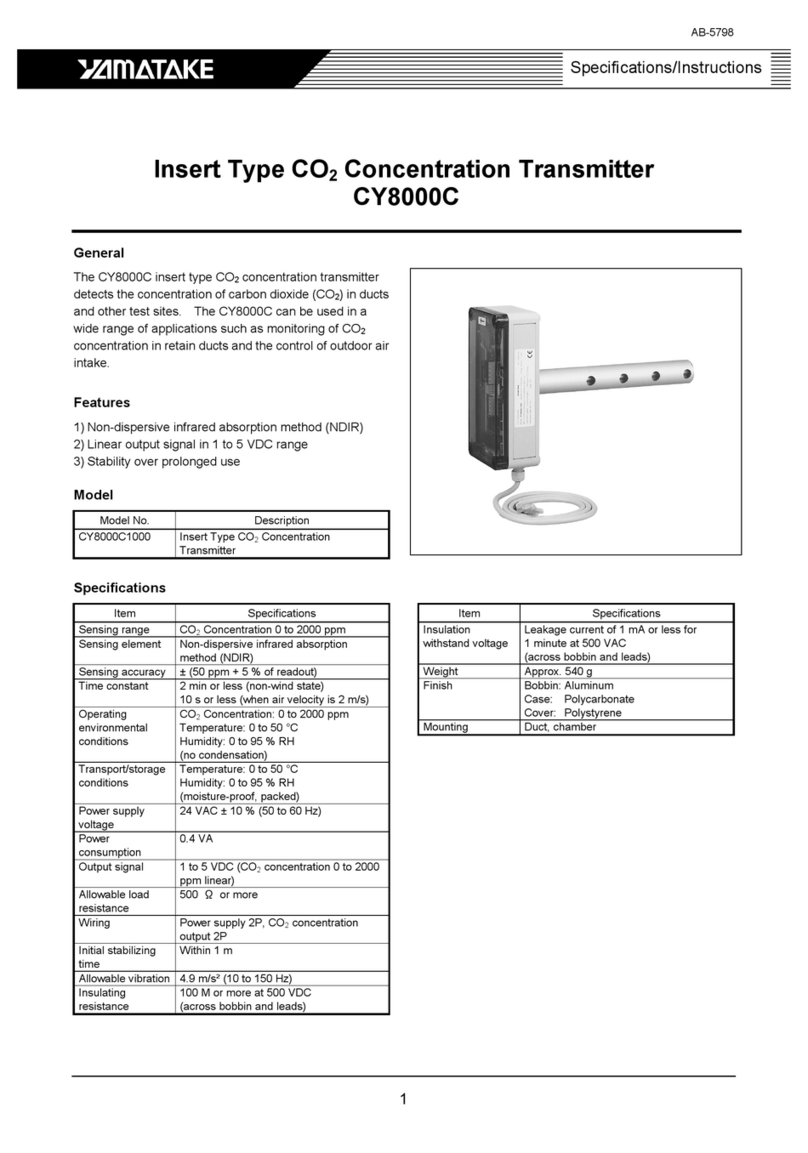
Yamatake Corporation Safety
ST3000 Smart Transmitter Series 900 Electronic Differential Pressure/Pressure Transmitter 3
2. Class I, Division 2 locations
2.1 Wiring methods
•Threaded rigid metal conduit, threaded steel intermediate metal conduit,
enclosed gasketed busways, or Type PLTC cable in accordance with the pro-
visions of remote-control, signaling, and power-limited circuits (see NEC, Arti-
cle 725), or Type ITC cable in cable trays, in raceways, supported by messenger
wire, or directly buried where the cable is listed for this use; Type MI, MC, MV,
or TC cable with approved termination fittings can be employed.
2.2 Sealing
• Each conduit entering the apparatus enclosure is required to be sealed as shown
in 1.1.2.
3. Class II, Division 1 locations
3.1 Wiring methods
•Threaded rigid metal conduit, threaded steel intermediate metal conduit, or
Type MI cable with termination fittings approved for the location, can be
employed.
3.2 Sealing
• Where a raceway provides communication between the apparatus enclosure and
an enclosure that is not required to be dust-ignitionproof, suitable means must be
provided to prevent the entrance of dust into the former enclosure through this
raceway. One of the following means can be used: (1) a permanent and effective
seal; (2) a horizontal raceway not less than 10 ft (3.05 m) long; or (3) a vertical
raceway not less than 5 ft (1.52 m) long and extending downward from the dust-
ignitionproof enclosure.
• Seals are not required to be explosionproof.
4. Class II, Division 2 locations
4.1 Wiring methods
• Rigid metal conduit, intermediate metal conduit, electrical metallic tubing,
dust-tight wireways, or Type MC or MI cable with approved termination
fittings, or Type PLTC in cable trays, or Type ITC in cable trays, or Type
MC or TC cable installed in ladder, ventilated trough, or ventilated channel
cable trays in a single layer, with a space not less than the larger cable diam-
eter between the two adjacent cables, can be employed.
4.2 Sealing
• Sealing means must be provided as shown in 1.3.2.




























